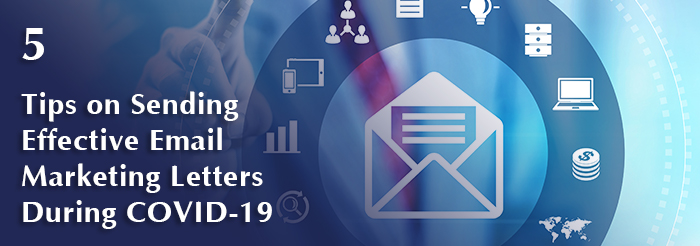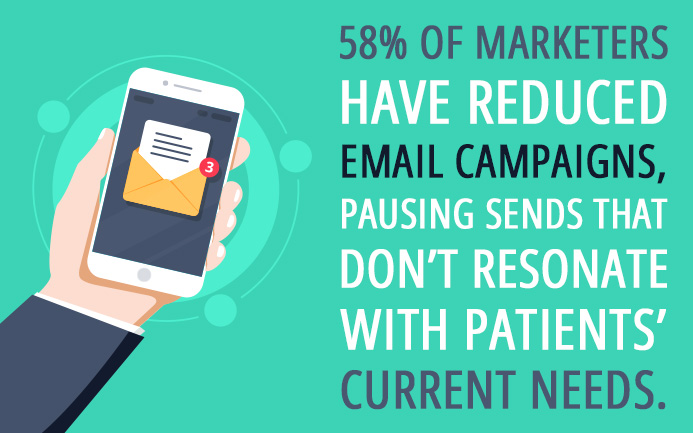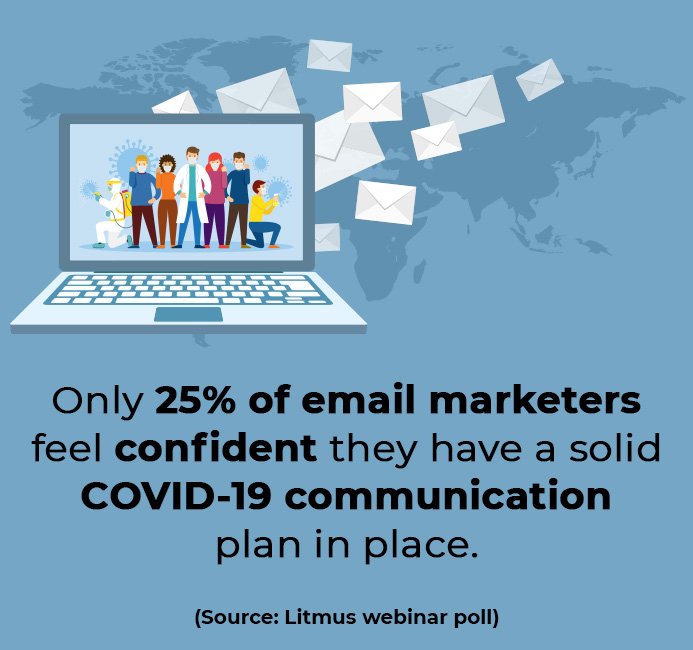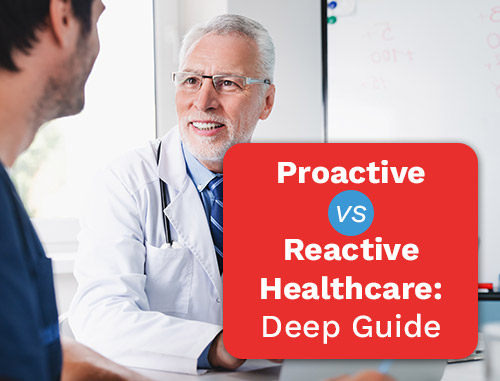5 Tips on Sending Effective Email Marketing Letters During COVID-19
Posted on
The last few weeks have been tough for all of us as we navigate a new normal amid the COVID-19 pandemic. From a personal standpoint, we are exercising social distancing by staying inside and canceling plans.
Professionally, most of us are working virtually without any indication of when we’ll be returning to our offices. We are experiencing interruptions to our day-to-day operations, changes in work hours and temporary closures, to name a few of the many challenges medical practices are currently facing.
During this time, there are many questions that healthcare marketers have around how they should move forward: Should they continue sending email marketing letters during COVID-19? Should they address the situation at hand? Should they be communicating the measures they are taking or limit their outgoing communications? How much communication is too much and where to draw the line?
Overwhelming, isn’t it?
At Practice Builders, we talk a lot about having empathy in our communications – with each other, for our employees and for our patients. To help you find the best way to communicate with your patients during this crisis, we’ve put together some tips on how to effectively (and appropriately) use email marketing letters during COVID-19 to get your message across.


But before we jump into that, let us tell you what healthcare marketers should NOT be doing.
“Don’t take advantage of the situation.”
Don’t try to exploit your patients’ fear. Just because you think patients are vulnerable at this time, don’t try to sell your services to make a quick buck. This isn’t the right time for marketing. Not only is it unethical and wrong, it is also very short-term. You might be able to make a few extra bucks, but the arrangement won’t last. We would highly recommend that you spend your time on things and strategies that are long-term.
Now let’s discuss how marketers can communicate effectively during the coronavirus crisis.
Tips For Writing Email Marketing Letter During COVID-19
We are not saying to withdraw all communications, but it helps to remember two key terms: timely and helpful. It is okay to promote your brand or services if you are assisting patients in dealing with the emotional or health issues they are experiencing.
Keep these tips in mind while sending your next email marketing letter during COVID-19.

Monitor Your Automated Emails
In the ongoing chaos and stress, don’t forget to monitor your triggered or automated emails that might hit your patients during critical times. Take a close look at your existing transactional messages, nurturing emails and any other automated emails that your patients might receive.
Put yourself in your patients’ shoes and ask: Are there any subject lines that may come across as insensitive? Is there any content that was effective until yesterday but is inappropriate today?
Even when you are creating new email campaigns for the next few weeks, think about how your message might be perceived during the crisis.
Understand Your Patients’ Needs
For healthcare marketers, it is especially challenging to strike a balance between going silent and addressing the crisis.
The chances are good that your patients are swamped by coronavirus crisis-related emails. As a healthcare provider or marketer, your job is to understand what – if anything – your patients need from you.
The first thing you should do is to listen to your patients and ask some questions about how they are doing. You could do an email survey and send it to your patient list. Just ask basics questions about their healthcare needs.

Another thing you can do is to reveal more about the steps you are taking to weather the storm and to keep your employees and patients safe. Your patients will appreciate relevant updates from you, so keep sending them.
Spread Some Joy
When so much of the content we are consuming is dark and heavy (and depressing at times), your patients will welcome distractions to take their minds off the news cycles.
Find ways to delight your patients if it makes sense for your brand. For instance, with people exercising social distancing, patients might not be coming to your medical practice unless necessary. But you could still provide value to patients who have healthcare needs, by offering free telephonic and video consultations. And right now, a lot of your patients would welcome the idea of talking to their provider from the comfort of their own home.
Share Content That Builds Trust
Your patients are growing more anxious and fearful by the day, and the healthcare brands that gain trust are the ones that bring clarity and comfort rather than adding to fear and anxiety. Littering your patients’ inbox with random email marketing letters during COVID-19 will help neither you nor your patients. The only type of messaging that will help you in these uncertain times is WIIFM – “What’s in it for me?”
At a time when your patients are growing fearful for their health and lives, the WIIFM questions a healthcare provider should answer are: What are the initial symptoms of the coronavirus? How much does it cost to treat the coronavirus in the USA? What should I do if I can’t pay my insurance? Is it possible to receive virtual care from your office? Do you offer telemedicine services to patients in need?
Unless your medical practice is open and is accepting patients, it might be challenging to serve your patients. This is why you need to shift to WIIFM messaging about alternatives and make useful offers through emails.
Don’t Pause All Promotional Emails
The key is to assess your outgoing emails and see if they make sense in the ongoing COVID-19 crisis. If your emails are sensitive to the situation and provide real value for your patients dealing with the pandemic, keep sending them. They might provide some semblance of direction in an otherwise stressed-out world.
However, if your emails’ content doesn’t center around the pandemic and your patients’ current needs, then yes, put them on the back burner. You can always send them in a few months after things have normalized.
As a general rule of thumb regarding any email – coronavirus-related or not – ask yourself if you’d like to receive it in your inbox. Take a look at all of your emails through that lens and then decide which ones to pause and which ones to send.
You can consider changing the email send volume in the light of the ongoing crisis, but pausing all promotional emails doesn’t feel appropriate.

Conclusion
Personalize your marketing letters during COVID-19. After all, email marketing letters during COVID-19 are about your patients – their understanding of the pandemic and how the steps you take will impact them. Empathy will play a critical role in connecting you with the audience. Remember this: Your patients will not care how much you know until they know how much you care. Write with your heart, not with your pen.

 Reaching The Right Audience Through Target Marketi..
Reaching The Right Audience Through Target Marketi.. Key Elements Affecting Your Website’s Performanc..
Key Elements Affecting Your Website’s Performanc.. Proactive vs. Reactive Healthcare: Deep Guide
Proactive vs. Reactive Healthcare: Deep Guide